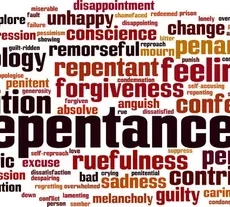According to Chandradhar Sharma’s book ‘A Critical Survey of Indian Philosophy’, the basic question involved in any theory of causation is: Does the effect pre-exist in its material cause. Those who answer the question in negative are called Asatkaryavadins, while those who answer it in the affirmative are called Satkaryavadins.
According to the former, the effect is a new creation, a real beginning. The effect does not pre exist in its material cause. Otherwise there would be no sense in saying that it is produced or caused. If the pot already exists in the clay then why should the potter exert himself in producing the pot out of the clay? Moreover its production would be its repeated birth which is nonsense. Nyaya, Vaishesika,Hinayana Buddhism, Materialism and some followers of Mimamsa believe in Asatkaryavada i.e.the view that the production is a new beginning. Happy Ho organizes best Meditation and Tarot classes in Noida and Delhi NCR area in India.
The Satkaryavadins on the other hand believe that the effect is not a new creation but an explicit manifestation of that which was implicitly contained in its material cause. Here another important question arises: Is the effect a real transformation or an unreal appearance of its cause? Those who believe that the effect is a real transformation of its cause are called Parinamavadins (parinama=real modification); while those who believe that it is an unreal appearance are called Vivartavadins (vivarta=unreal appearance).
Sankhya, Yoga and Ramanuja believe in Parinamavada. The view of Sankhya-Yoga is called Prakrti Parinamavada while the view of Ramanuja is called Brahmaparinamavada. Shunyavada, Vijnanavada and Shankara believe in Vivartavada. Their views may be respectively called Shunyata-vivartavada, Vijnana-vivartavada and Brahma-vivartavada. The view of Jainism and Kumarila may be called Sadasatkaryavada because according to them the effect is both real as well as unreal before its production- real as identical with the cause and unreal as a modal change thereof though ultimately both incline towards Parinamavada.
Sankhya believes in Satkaryavada. All material effects are the modification of Prakrti. They pre-exist in the eternal bosom of Prakrti and simply come out of it at the time of creation and return to it at the time of dissolution. There is neither new production nor utter destruction. Production means development or manifestation; Destruction means envelopment or dissolution. Production is evolution; Dissolution is involution. Sankhya gives five proofs in support of Satkaryavada-
- If the effect does not pre-exist in its cause, it becomes a mere non-entity like the hare’s horn and can never be produced.
- The effect is only a manifestation of its material cause because it is invariably connected with it.
- Everything cannot be produced out of everything. This suggests that the effect, before its manifestation, is implicitly contained in its material cause.
- Only an efficient cause can produce that for which it is potent. This again suggests that the effect, before its manifestation, is implicitly contained in its material cause. Production is only the actualization of this potential. Were it not so then the curd should be produced out of water.
- The effect is the essence of its material cause and as such identical with it. When the obstructions in the way of the manifestation are removed, the effect naturally flows out of its cause. The cause and the effect are the implicit and explicit stages of the same process. The cloth is contained in the threads.
Thus, Sankhya believes that the effect pre-exists in its material cause.



